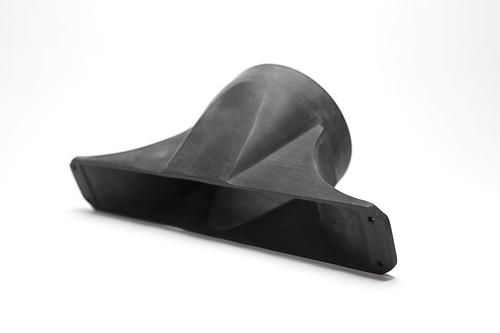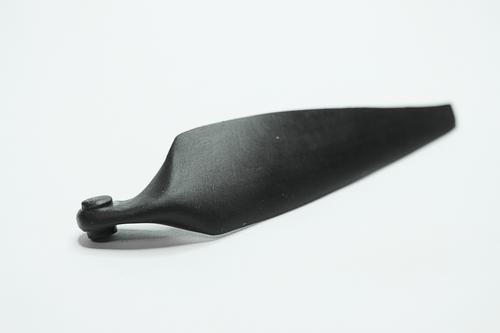Video: 3D Printing Tough, Strong Composites -- From Fabrics
Like we've often said, 3D printing isn't just for making stuff -- it's also for making new materials that can't be produced any other way. Impossible Objects' Composite-Based Additive Manufacturing process 3D prints aerospace-grade end-production parts from novel composites made of fabrics.
March 4, 2016
Like we've often said, 3D printing isn't just for making stuff -- it's also for making new materials that can't be produced any other way. Additive manufacturing (AM) technologies are being used everywhere to devise new materials and better ways of making existing ones, including composites for end-production parts.
Although the MarkForged 3D printer has received lots of attention, it's not the only one that 3D prints composites. Others include Arevo Labs' robotic additive manufacturing (RAM) platform that 3D prints optimized, carbon-fiber composite production parts, and works with commercially available robots on the factory floor. Arevo's proprietary technology was developed to print ultra-strong composite parts based on PEEK (polyether ether ketone) and PAEK (polyaryletherketone) thermoplastics for demanding end-use applications like aerospace, single-use medical devices, and oil & gas.
Barron Associates had this drone propeller made using Impossible Objects' Composite Based Additive Manufacturing 3D printing process. The propeller is fabricated in a composite of carbon fiber and nylon, and measures approximately 4 inch x 1 inch x 1 inch.
(Source: Impossible Objects)
Another new kid on the block is Impossible Objects, which takes a different approach to making tough, strong composites for many of those same applications. Although they're working on commercial machines that print using the company's Composite-Based Additive Manufacturing (CBAM) process, right now the team's main business is providing manufacturing services, co-founder and chief technical officer Bob Swartz told Design News.
CBAM is a hybrid processing and fabrication technique capable of producing fiber-reinforced composite parts from a wide variety of fibers, fabrics, and polymers. Both engineered and natural fibers can be combined with standard thermoplastics. At present, engineers can order parts made from carbon fiber, Kevlar, and fiberglass composites.

This automotive cold air intake was fabricated by Impossible Objects using its Composite Based Additive Manufacturing process. The part is made of a composite of carbon fiber and nylon and measures approximately 7 inch x 3 inch x 2.5 inch.
(Source: Impossible Objects)
"At the beginning, when we started thinking about 3D printing we realized it was a materials science problem," said Swartz. "So we started working with a retired materials scientist. Of course, we went through several different ideas." Like others before them, the team concluded that existing additive processes take too long to get parts made, the material properties aren't all that good, and the machines are expensive.
Inkjet printers are relatively inexpensive compared to lasers and other methods of 3D printing, they're very fast, and can be scaled way up, so Impossible Objects chose to develop its technology using that AM process. "We've been at this for six years now, and we can produce high-quality parts reliably and consistently, in an automated fashion," said Swartz.

As you can see in this video, the process starts with a CAD model of the object that's sliced into layers. Using a thermal inkjet printhead, the layer shapes are printed with an aqueous fluid on sheets of fiber. Thermoplastic powder is then applied to the fiber sheet, sticking to parts where the fluid has been printed, and the excess is removed. The stacked sheets are heated to the powder's melting temperature, fusing the sheets, which are then compressed down to the finished part size. The final stage consists of removing uncoated fibers to achieve the part's net shape.
Parts are two to five times the tensile strength and tensile modulus of parts produced with stereolithography (SLA), said Swartz. Since it's only an aqueous solution going through the printheads, printing is simplified and occurs mostly at room temperature, compared to processes that use UV-curable resins, filament fusion, or powder deposition with lasers and precision ovens. It's also easier to get rid of the excess powder than it is to remove the support structures required with other methods.
So far, a wide variety of carbon fiber composite parts have been made with the CBAM process. They include a rear stabilizer mount for a drone, fan blades for wind tunnel tests, an electronic enclosure holding avionics that acts as a Faraday shield, and components for a satellite.
READ MORE ARTICLES ON 3D PRINTING COMPOSITES:
R&D consulting firm Barron Associates used CBAM and a long-fiber carbon composite for making an aircraft propeller and wing for a customer's small UAV functional prototype. The UAV is small enough to be launched from a tube, with a 20-inch wingspan, Barron's research scientist David Neal told us. That means there's not a lot of wing area, but at the same time, there's high wing loading. "Usually, the wing can have a strut attachment to transfer load to the fuselage, so you do more reinforcement there," he said. "But we couldn't do that -- we had to have articulating wings. In that case the attachment to the fuselage is moving, so the wing has to carry a lot of load on its own. So the structure has to be small, very rigid, and with very good resolution and accuracy on some of the surface features."
Barron Associates has used other 3D printing services to fabricate wings from carbon fiber composites, but none with the strength that resulted from the CBAM process. Others also took a lot longer to iterate the design when figuring out how to create the wing reinforcements, and sometimes required the R&D firm to do its own carbon fiber layups for the wings and propellers, Neal said. Alternatives would have been other plastics a supplier could confidently machine that wouldn't warp or weather, or an injection molder that could produce the very fine, sharp edges on the parts. Both of those options are very hard to find.
Ann R. Thryft is senior technical editor, materials & assembly, for Design News. She's been writing about manufacturing- and electronics-related technologies for 28 years, covering manufacturing materials & processes, alternative energy, and robotics. In the past, she's also written about machine vision and all kinds of communications.
Like reading Design News? Then have our content delivered to your inbox every day by registering with DesignNews.com and signing up for Design News Daily plus our other e-newsletters. Register here!
About the Author(s)
You May Also Like




